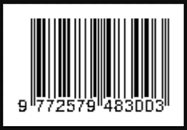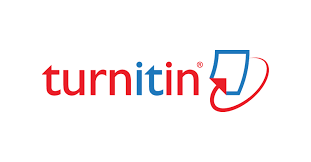MODEL KONVERGENSI DALAM KOMUNIKASI PEMBELAJARAN
DOI:
https://doi.org/10.32550/teknodik.v8i14.524Keywords:
komunikasi pembelajaran, pendekatan konvergensi, pembelajaran, interaktif, kooperatif.Abstract
References
Abdullah, Mardziah Hayati. 2000. Media Literacy. (On Line). Tersedia : http.//www. Ed.go.eric digests. (20 September 2001).
Abdulhak, Ishak. 2001. Model Komunikasi Pembelajaran pada Jenjang Pendidikan Dasar. Hasil Penelitian. Bandung: Fakultas Ilmu Pendidikan UPI.
, 2000. Metodologi Pembelajaran Orang Dewasa. Bandung: Andira.
, 1996. Strategi Membangun Motivasi dalam Pembelajaran Orang Dewasa. Bandung: Agta Manunggal Utama.
Anglin, Gary J. (Ed.). 1991. Instructional Technology. Past, Present, and Future. Englewood, Colorado: Libraries Unlimited, Inc.
Arends, Richard I. 1998. Learning to Teach. Fourth Edition. Boston: Mc Graw Hill.
Anwas, Oos M., 1999. Proses Komunikasi dalam Bingkai Reformasi Pendidikan. Makalah Jurnal Teknodik. Depdiknas. No.6/VI/Teknodik/ April/1999.
Beck, Judy AS dan Wynn, Harriet. 1998. Technology in Teacher Education: Progress Along the Continuum. (On Line) Tersedia : http./
/www. Ed.go.eric digests. (19 September 2001).
Bigge, Morris L. 1982. Learning Theories for Teachers. Fourth Edition.
New York: Harper & Row
Boar, Bernard H. 1994. Practical Steps for Aligning Information Technology with Business Strategies. How to achieve a Competitive Advantage. New York: John Wiley & Sons.
Burden, Paul R. Byrd, David M. 1999. Methods for Effective Teaching.
Second Edition.Boston: Allyn and Bacon.
Chauchan, S.S. 1979. Innovations in Teaching-Learning Process. New Delhi: Vikas Publishing House PVT Ltd.
Chow, Vincent WS. (Ed.). 1997. Multimedia Technology and Applications.
Singapore: Springer-Verlag Singapore Pte.Ltd.
Cole, Peter G. Chan, Lorna K.S. 1994. Teaching Principles and Practice.
Second Edition. New York: Prentice Hall.
Cropley, A.J. Dave, R.H. 1978. Lifelong Education and the Training of Teachers. Hamburg: Unesco Institute for Education.
Davis, Robert H. (et al.). 1974. Learning System Design. An Approach to the Improvement of Instruction. New York: McGraw-Hill Book Company. Dick, Walter. Reiser, Robert A. 1989. Planning Effective Instruction. New Jersey: Englewood Cliffs.
Ditjen Dikdasmen. 1998. Meningkatkan Kompetensi Guru dan Mutu Belajar Siswa. Jakarta: Ditjen Dikdasmen Depdikbud.
Dunkin, Michael J. Biddle, Bruce J. 1974. The Study of Teaching. New York: Holt, Rinehart and Winston Inc.
Ellswort, James B. 2000. A Survey of Educational Change Models (On Line). Tersedia : http.//www. Ed.go.eric digests. (25 September 2001). Entwistle, Noel. 1981. Styles of Learning and Teaching. New York: John Wiley & Sons.
Freire, Paulo. 1972. Paedagogy of the Oppressed. Terjemahan. Jakarta: LP3ES. Gordon, Thomas. 1974. Teacher Effectiveness Training. New York: David MacKay Company.
Gross, Ronald. 1991. Peak Learning. How to Create your Own lifelong Education Program for Personal Enjoyment and Professional Success. New York: Penguin Putnam.
Jalal, Fasli. Supriadi, Dedi. (Ed.). 2001. Reformasi Pendidikan dalam Konteks Otonomi Daerah. Jakarta: Adicita.
Jarvis. Peter. 1992. Paradoxes of Learning. On becoming an Individual in Societv. San Fransisco: Jossey-Bass Publishers.
Jonassen, David H. (Ed.). 1996. Handbook of Research for Educational Communication and Technology. New York: Macmillan Library Refrence USA.
Joyce, Bruce. Weil, Marsha. 1996. Models of Teaching. Fifth Edition.
Boston: Allyn and Bacon.
Killen, Roy. 1998. Effective Teaching Strategies. Lesson from Research and Practice. Second Edition. Katoomba NSW: Social Science Press. Kindervatter, Suzanne. 1979. Nonformal Education as an
Empowering Process. Amherst: Center for International Education University of Massachusstes.
Kindsvatter, Richard. Et al. 1996. Dynamics of Effective Teaching. Third Edition. New York: Longman.
Knowles, Malcolm. 1973. The Adult Learner. A Neglected Species.
Houston: Gulp Publishing Company,
Levin, James. Nolan, James F. Principles Classroom Management.
Second Edition. New York: Allyn and Bacon.
McLeod, Graham. Smith, Derek. 1996. Managing Information Technology Projects. Cambridge: An International Thompson Publishing Company. Miles, Mathew B. 1962. Innovation in Education. New York : Teachers College Press.
PEQIP Depdiknas. 1998. Basic Education Quality Improvement Project.
Jakarta: PEQIP Depdiknas.
Plomp, Tjeerd. Ely, Donald P. (Ed.). 1996. International Encyclopedia of Educational Technology. Second Edition. Cambridge: Pergamon. Rogers, Everett M. 1986. Communication Technology. The New Media in Society. New York: The Free Press.
, 1983. Diffusion of Innovation. Third Edition London : The Free Press Collier Macmillan Publishers
Rose, Colin. Nichol, Malcom J. 1997. Accelerated Learning for the 21" Century. New York: Delacorte.
Romiszowski, AJ. 1981. Designing Instructional Systems. Decision making in cource planning and curriculum design. London: Kogan Page. Rylatt, Alastair. 2000. Learning unlimited: Practical Strategies for Transforming Learning in the Workplace of the 21st Century. Warriewood NSW: Business + Publishing.
Seels, Barbara B. Richey, Rita C. 1994. Instructional Technology: The Definition and Domains of the Field. Washington: AECT.
Silberman, Mel. 1996. Active Learning. 101 Strategies to Teach any Subject. Boston: Allyn and Bacon.
Slavin, Robert E. 1995. Cooperative Learning. Theory, Research, and Practice. Boston: Allyn and Bacon.
Somekh, Bridget. Davis, Niki. 1997. Using Information Technology effectively in Teaching and Learning. London: Routledge.
Wittrock, Merlin C. (Ed.). 1986. Handbook of Research on Teaching.
Third Edition. New York: Macmillan Publishing Company.
--
Downloads
Published
How to Cite
Issue
Section
Citation Check
License
Please download and complete the Form, Copyright Transfer, and Ethics Statement Form. The following is provided at the time of submitting the text (Upload Additional Files):









